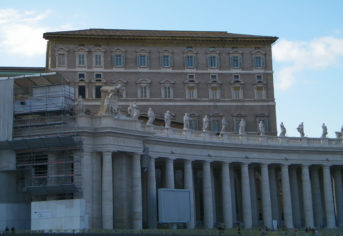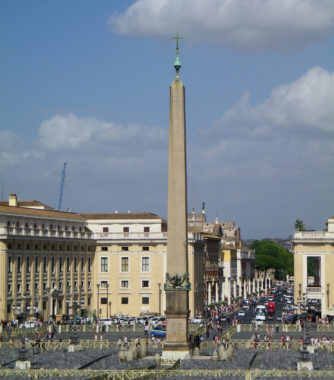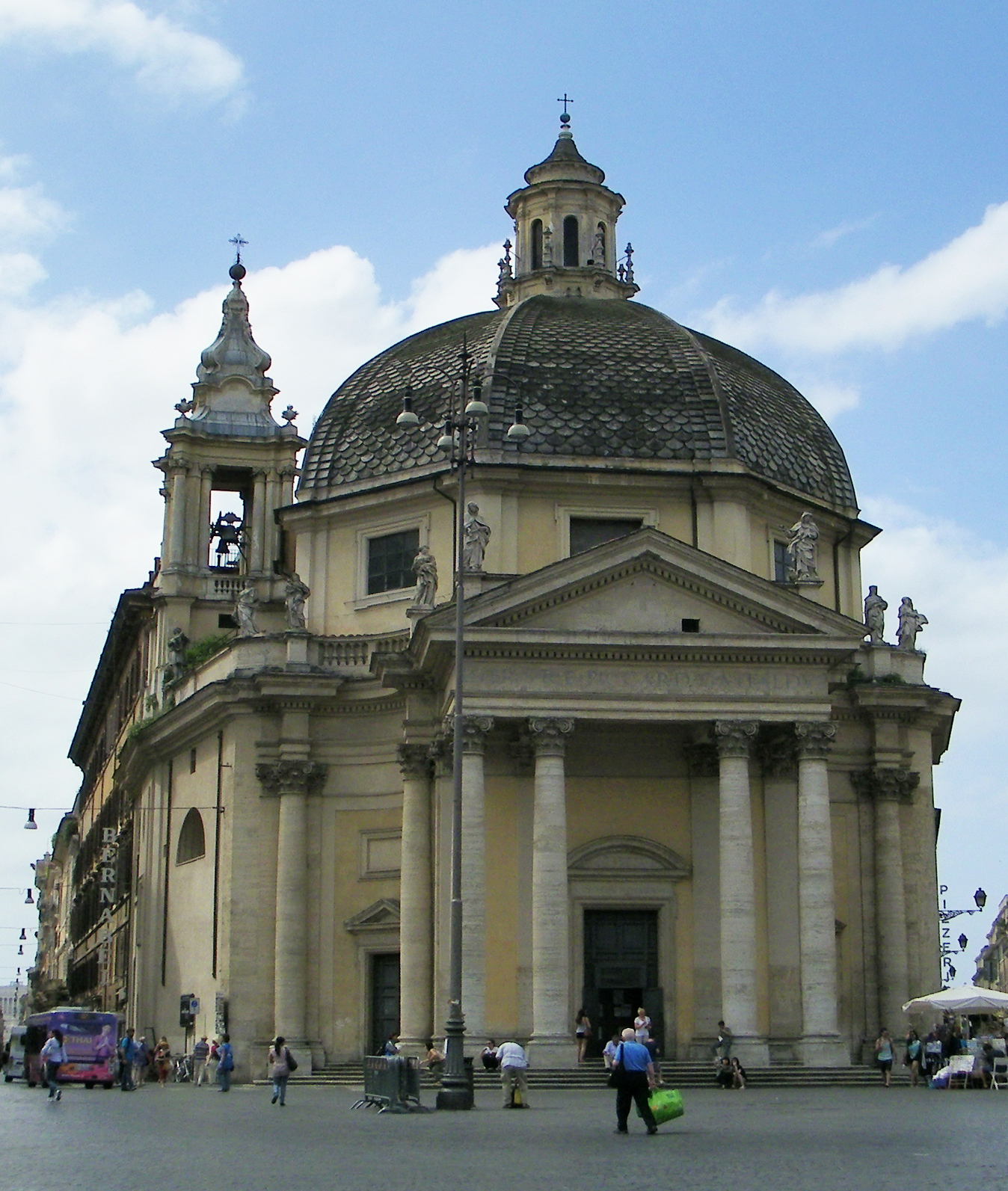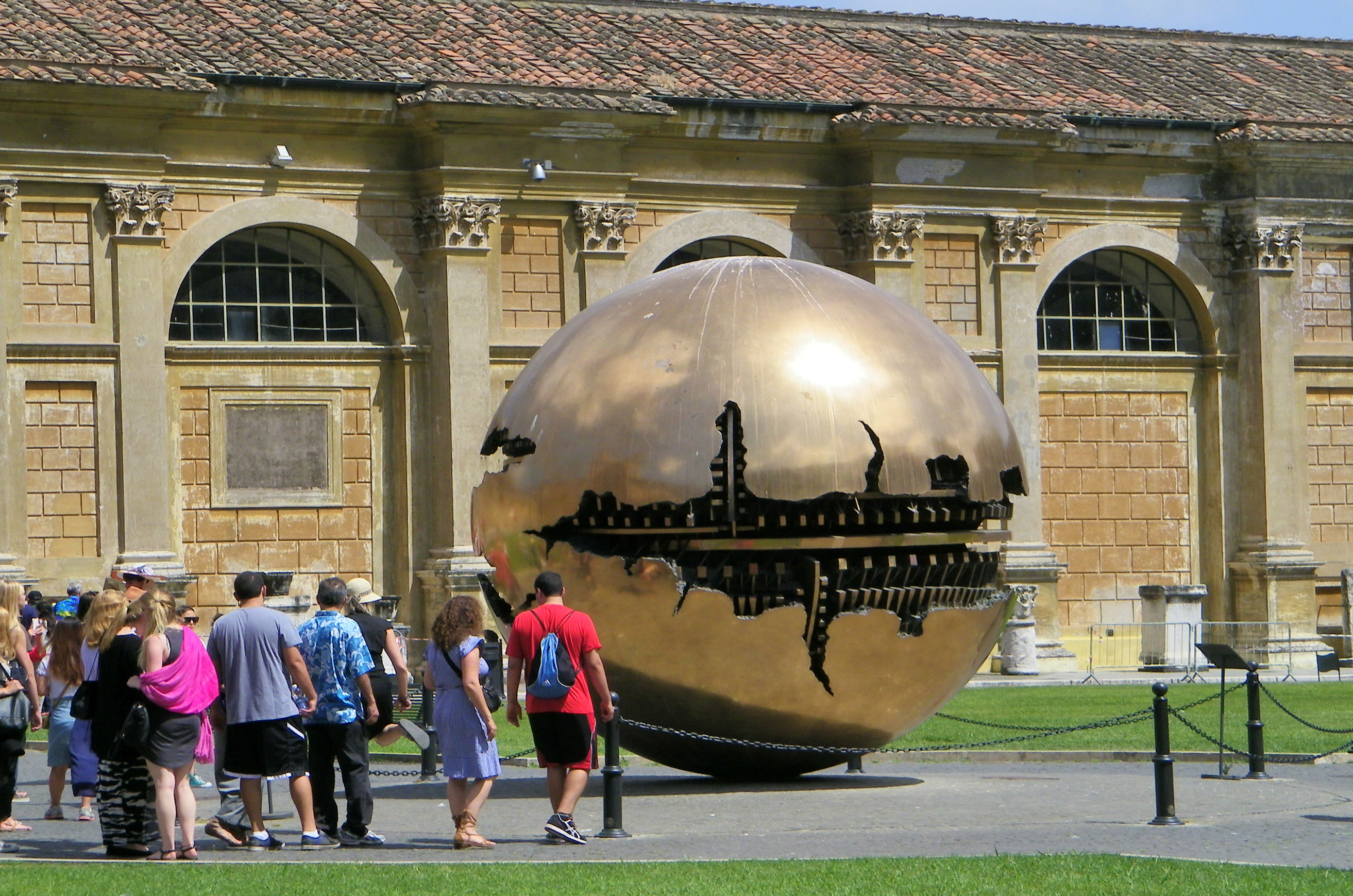The Vatican
Stato della Città del Vaticano (Vatican City State) is a walled area within the city of Rome. On only about 110 acres with the Piazza San Pietro (St. Peter’s Square) as its central gathering place, sit St. Peter’s Basilica, the Sistine Chapel and the Vatican Museums. The Vatican State is the smallest internationally recognized independent state in the world, and ruled by the Bishop of Rome (the Pope). The highest officials are Catholic clergy from various nations who generally reside at the Apostolic Palace.
Although Pope Francis has chosen more modest accommodations, The Apostolic Palace, also known as Papal Palace, is the official residence of the Pope. The building contains the Papal Apartments, various government offices of the Catholic Church and the Holy See, private and public chapels, Vatican Museums and the Vatican library, including the Sistine Chapel, Raphael Rooms and Borgia Apartment. On the top floor, second window from the right is where the Pope delivers the Angelus.
We were very excited as our cruise approached, since a change was coming at the Vatican. Pope Benedict XVI resigned on February 28, 2013 – just months before our visit – and we had hoped that the process would take a while so we might be in St. Peter’s Square on just the right day. But, we were not that lucky. On March 13, just two days into the papal conclave, white smoke billowed out of the Sistine Chapel chimney, which meant a new pope had been elected and Jorge Mario Bergoglio was that man. Because of his concern for the poor, Bergoglio chose Francis as his papal name in honor of Saint Francis of Assisi. Since as many as 350,000 people have been known to fill the square on occasions such as this, he had plenty to help him celebrate his inauguration on March 19, 2013 – but it would have been pretty sweet to have been one of them.
In the center of the square stands a 135 ft tall Egyptian obelisk. Originally located at Heliopolis in Egypt, it was moved once and then again in 1585, when pope Sixtus V wanted it in front of St. Peter’s Basilica. The relocation was thought to be impossible, but 900 men and more than 100 horses, working five months completed the task on September 10, 1586.
St. Peter’s Square is bordered on two sides by semi-circular Colonnades which, according to Bernini, symbolize the stretched arms of the church embracing the world. The colonnades were built in 1660 and consist of four rows of columns. The columns are 66 ft high and 5 ft wide. 140 statues were installed on top of the colonnades, all created by Bernini and his students. They depict popes, martyrs, evangelists and other religious figures.
“Swiss Guards are stationed at the Vatican. For their role similar to a bodyguard, recruits must be Catholic, single males with Swiss citizenship who have completed basic training with the Swiss military and can obtain certificates of good conduct. Recruits must have a professional degree or high school diploma and must be between 19 and 30 years of age and at least 5 ft. 8.5 in. tall. The official dress uniform is of blue, red, orange and yellow with a distinctly Renaissance appearance.” – READ MORE
I have several panoramic shots, but it’s hard to show how they all fit together. While doing a little research to get this ready to go, I found an excellent 3D tour of St. Peter’s square which you can see here. It shows how all the pieces fit together and there’s a great narrative along with it, as well as more links to the site where you can get more information. There is also a 3D tour of the Sistine Chapel, which is very helpful, since photos are not allowed inside.
The Vatican State: Don’t miss it!
Next up: The Vatican Museums
Happy trails,
Barb











Comments are closed here.